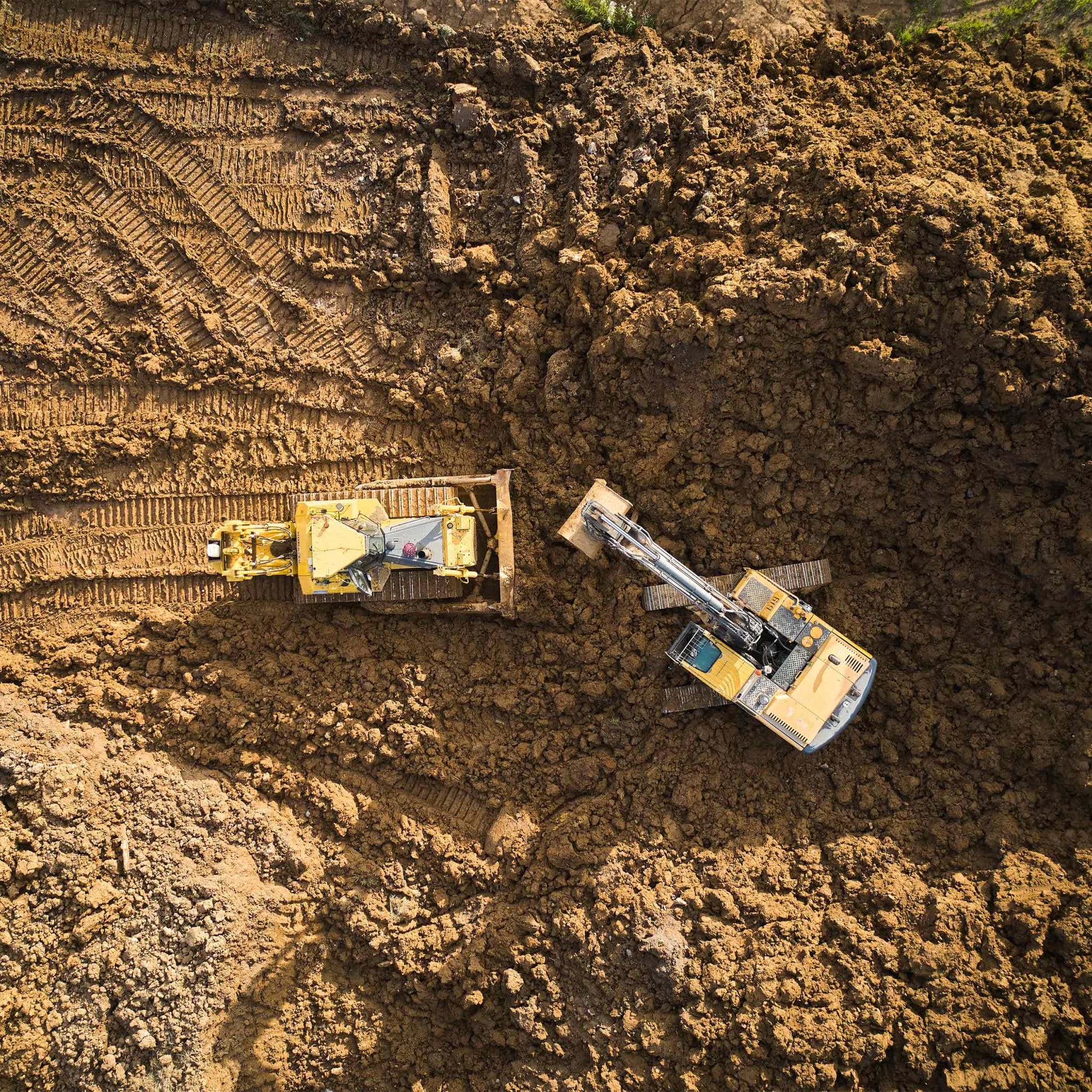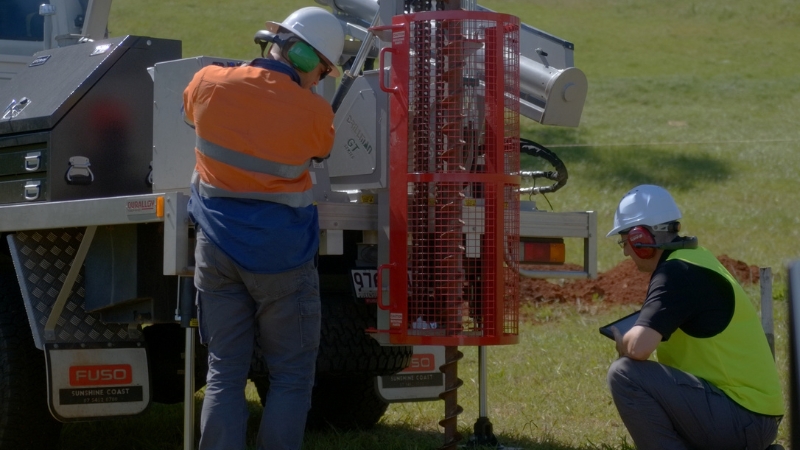A Comprehensive Take A Look At the Range of Method for Geotechnical Engineers and Their Influence on Task Usefulness and Risk Mitigation
The range of technique for geotechnical designers includes an array of critical duties that straight affect task expediency and risk monitoring. What particular approaches do geotechnical designers employ to navigate these intricacies properly?
Roles and Obligations of Geotechnical Designers
Geotechnical engineers play an essential function in the foundation of building jobs, making sure that frameworks are built on solid ground. Geotechnical designers conduct website examinations to gather crucial data pertaining to subsurface problems.

Partnership is likewise a crucial aspect of their duty; they function carefully with civil engineers, designers, and environmental professionals to make sure that geotechnical considerations are integrated right into overall task planning. Eventually, the expertise of geotechnical designers is vital in promoting the security, sustainability, and feasibility of construction undertakings.
Key Locations of Geotechnical Evaluation
Soil samples and geological studies are fundamental components in the essential locations of geotechnical evaluation. These tasks provide essential information concerning the chemical and physical buildings of the subsurface materials, allowing engineers to examine website conditions precisely. The evaluation usually incorporates soil classification, compaction, shear strength, and permeability, all of which are crucial for understanding the habits of dirts under various loading conditions.
One more considerable area of focus is slope stability analysis, which examines the risk of landslides or soil erosion. This involves assessing the geometry of inclines, dirt kinds, and groundwater problems. Website characterization is likewise important, as it includes a comprehensive investigation of the website's history, including previous building, contamination, and natural risks.
Additionally, groundwater analysis plays an important function in geotechnical evaluation, influencing both the style and building stages. Recognizing the groundwater table, circulation direction, and prospective changes is necessary for effective foundation layout and stormwater management.
Together, these vital locations of geotechnical evaluation develop a thorough structure that notifies decision-making processes, making certain safe and lasting design methods while lessening prospective risks linked with subsurface problems.
Influence On Job Expediency
The feasibility of a building and construction job hinges considerably on the understandings gained from geotechnical investigations. These examinations offer necessary data relating to soil properties, groundwater problems, and subsurface characteristics, which are essential for identifying the suitability of a site for building and construction. By examining aspects such as soil bearing ability, settlement possibility, and slope security, geotechnical engineers play a crucial role in reviewing whether a task can proceed as intended or if modifications are needed.
Furthermore, the results of geotechnical research studies directly influence job style and building and construction techniques. Exact geotechnical data permits notified decision-making, making sure that architectural layouts accommodate site-specific problems and abide by governing needs. This process helps in enhancing resource allotment, thus reducing unexpected delays and price overruns.
In addition, a complete geotechnical evaluation boosts the total viability of a task by recognizing potential obstacles early in the planning phase. By attending to these obstacles proactively, stakeholders can improve the project's possibility of success, guaranteeing that it satisfies both functional and economic objectives. In summary, the payments of geotechnical engineers are integral to developing task usefulness, thus laying the groundwork for efficient project execution.
Risk Reduction Strategies
While building and construction tasks naturally involve numerous uncertainties, carrying out reliable danger reduction techniques can considerably decrease possible problems emerging from geotechnical elements. Geotechnical designers play a crucial duty in recognizing, assessing, and attending to risks related to subsurface problems, guaranteeing that tasks proceed smoothly and stay within budget.
One try here main method entails extensive site investigations, which consist of dirt tasting, in-situ screening, and research laboratory analysis. These evaluations supply crucial data on dirt structure, actions, and strength, enabling designers to develop foundations and earthworks that are both efficient and safe. Additionally, utilizing sophisticated modeling methods, such as limited component analysis, enables engineers to predict how soil and architectural interactions might advance under different loading problems.
An additional efficient reduction technique is the implementation of proper layout adjustments, such as utilizing reinforcement techniques or embracing alternate building and construction approaches, have a peek here which can improve stability and lower vulnerability to geotechnical problems. Furthermore, constant monitoring of website problems during building can help with timely interventions, thus reducing the chance of unanticipated complications.
Study and Real-World Applications
Study give important insights right into the functional applications of geotechnical design principles and highlight the performance of threat mitigation approaches in real-world circumstances. One notable example is the construction of the Centuries Dome in London, where innovative ground treatment strategies were executed to resolve challenging soil problems. By employing deep concrete blending and dirt stabilization methods, engineers effectively created a steady structure that mitigated possible settlement dangers, guaranteeing the task's feasibility.
One more case is the stabilization of the hill for the new highway in The golden state, where extensive incline evaluation and surveillance were utilized. Geotechnical engineers used retaining wall surfaces and water drainage systems to manage groundwater, considerably minimizing the threat of landslides. This aggressive technique not only protected the honesty of the freeway however also improved public safety and security.
In addition, the development of a major airport incurable demonstrated the value of detailed site investigations. civil consulting engineers. Geotechnical designers recognized bothersome dirt layers and advised details structure designs, bring about an effective task completion with reduced delays. These study highlight the essential role that geotechnical engineers play in assessing risks and applying reliable options, therefore enhancing job expediency and total success
Final Thought

By evaluating elements such as dirt bearing ability, settlement potential, and slope stability, geotechnical designers play an essential duty in evaluating whether a project can continue as planned or if adjustments are required.
In recap, the contributions of geotechnical engineers are indispensable to establishing project expediency, therefore laying the foundation for efficient job execution.
Geotechnical designers recognized troublesome soil layers and recommended details structure styles, leading to a successful project conclusion with decreased delays. geotechnical eng. These instance research studies underscore the critical duty that geotechnical designers play in examining dangers and carrying out efficient options, thus enhancing project expediency and overall success
With efficient danger mitigation approaches and the application of sophisticated modeling strategies, geotechnical engineers enhance task outcomes and minimize dangers related to soil and groundwater problems.